
Latest News.
Legal All Stars 2021: German Business Magazine WirtschaftsWoche awards Senior Partner Dr Peter Kather as top lawyer in the category Patent Law
Dr. Peter Kather has been awarded 2nd place by German Business Magazine WirtschaftsWoche in its current ranking of “Legal All Stars 2021” in the legal field of patent law, and thus ranks among the top three lawyers in his field in Germany.
“This award for Dr Kather reflects not only his outstanding patent law expertise, but also the high reputation he enjoys not only among clients and competitors, but especially among judges,” says Miriam Kiefer, Managing Partner of Kather Augenstein.
The entire team of Kather Augenstein sincerely congratulates its namesake and senior partner on this special award!
For the second time, the Handelsblatt Research Institute (HRI), in the course of the ranking launched in 2020, surveyed almost 23,000 business lawyers on their most renowned competitors from 25 specialist areas. The survey resulted in a list that was evaluated by a jury of experts consisting of in-house lawyers, professors, litigation financiers and consultants, so that a ranking with a total of 75 lawyers from 52 law firms could be compiled and finally three “Legal All Stars” emerged from each legal field.
The ranking of the Legal All Stars was published in the 18 february 2022 issue of WirtschaftsWoche. The complete overview of all Legal All Stars 2021 by legal area can be found here.
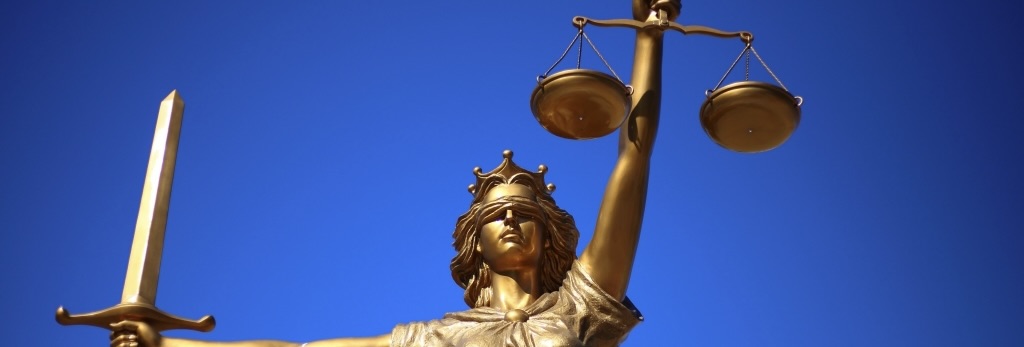
Latest News.
HRC Dusseldorf, Judgment of 18.02.2021 – 2U 33/20: Extension and concentration of actions on appeal
The Second Senate of the Higher Regional Court Düsseldorf had to deal with the question under which conditions an action can be extended to include further IP rights in appeal proceedings. In doing so, the Senate primarily included Section 145 PatG in the question of whether an extension to further patents in suit is expedient in the sense of Section 533 ZPO (Code of Civil Procedure) or not.
I. FACTS
The plaintiff at first instance asserted the infringement of claims of the patent in suit (hereinafter “patent in suit A”) relating to “securing access to multimedia content by authenticated distance measurement”. The attacked device was a streaming adapter offered and distributed in Germany, which is used to transmit video content to a television via an HDMI input, whereby the HDMI standard allows the so-called HDCP technology as copy protection.
The method claim of the patent in suit A asserted at first instance provides, inter alia, that “a distance measurement between a first and a second communication device is to be performed and it is to be checked whether the measured distance is within a predefined distance interval”. The patent in suit A further provides that “the first and second communication devices share a common secret and said common secret is used”.
The Regional Court dismissed the action at first instance. The plaintiff appealed and extended the action to include a further patent in suit (hereinafter “patent in suit B”) which provides, inter alia, that “a distance measurement is carried out between the first and second communication devices“. Furthermore, it provides that the secret shared by the first and second communication devices is already shared before the distance measurement is carried out, whereby the patent in suit B defines the sharing of the secret in more detail by further features. Both patents belong to the same patent family.
II. REASONS
The HRC Düsseldorf dismissed the extension of the action at second instance as inadmissible. In the reasons for its decision, however, the HRC did not only deal with the case at hand, but above all made general considerations as to the conditions under which an extension of the action to include a further patent in the appeal proceedings may or may not be expedient.
Whether the extension of the action is admissible in the appeal proceedings depends on § 533 ZPO (Code of Civil Procedure). The extension of the action must be expedient if the opponent does not consent to it. It is expedient if it is procedurally economical. The question is therefore whether the extension of the action prevents another legal dispute. However, it has to be taken into account that every plaintiff already expressed his or her will to enforce the claim by merely extending the action. Therefore, further litigation is nearly always prevented by an extension of the action. Prevention is therefore not a suitable criteria for determining the if an extension of the action is expedient in similar cases.
Therefore, the expediency is to be assessed according to whether the previous subject matter of the proceedings is usable for the assessment of the new motions (i.e. based on the newly introduced patent in suit) or not. If so, the extension of the action is expedient. If, however, the previous subject-matter of the proceedings is not usable in relation to the new motions, the extension would be inadmissible in principle.
If the action is extended to a further IP right, the previous subject-matter of the proceedings is generally not usable and the extension of the action is therefore inadmissible. This is because each IP right must always be interpreted on its own merits, even if the descriptions of the IP rights are partly identical. If necessary, further findings of facts were required, e.g. in the case of new or deviating claim features. This applied all the more if the prospects of success of an appeal against the grant of the further patent in suit or the protectability of a newly introduced IP right had to be examined and the prior art is also unknown till then.
The case could be different, however, if the plaintiff is forced by Sec. 145 Patent Act to assert the other IP rights in the same infringement dispute. In view of the vagueness of the requirements of Sec. 145 Patent Act (“the same or similar act”), it is sufficient if the plaintiff has to reckon with the serious possibility that Sec. 145 Patent Act would be held against him. However, this is contradicted by the interpretation of § 533 (2) ZPO (Code of Cicvil Procedure). The purpose of the appeal is to check and correct errors, but not to expand the facts.
The HRC Düsseldorf therefore is of the opiniion that an extension of the action is in any case expedient if the plaintiff, through no fault of his own, runs the risk of incorrectly assessing the requirements of Section 145 Patent Act. It is not its fault if the IP right could not yet be asserted in the first instance, e.g. because the IP right was not granted or the plaintiff was not entitled to sue.
However, the plaintiff caused the situation himself as soon as he was able to assert the IP rights at first instance, but did not due to procedural reasons. In addition, a number of disadvantages of the defendant must be taken into account, such as the lack of a factual instance, the late initiation of nullity proceedings or the possibility of the plaintiff to enforce the appeal judgement without providing security. In such a case, a careful examination of the individual case is required.
Thus, an extension is expedient if there are no substantial differences between the IP right asserted in the first instance and the IP right asserted only in the appeal instance, so that the previous subject-matter of the proceedings can be adopted. The case is similar if the infringement of new features is undisputed or if the realisation of these new features can be established on the basis of the findings of facts of the Regional Court.
In contrast, the extension of the action is not expedient if new findings of facts are necessary and/or a new comprehensive interpretation is required. The HRC Düsseldorf also assumed the latter in the present case. While patent in suit A provides for a specific distance measurement, patent in suit B only required an undefined distance measurement. In addition, patent in suit B provides that the “secret” between the first and second communication device has to be carried out before the distance measurement. This required a new definition of the scope of protection and thus also a new analysis of infringement.
III. CONCLUSION
Although the HRC Dusseldorf’s statements are comprehensible, the ruling does not seem to be consistent in the result.
On the one hand, the HRC emphasizes that an extension of the action is expedient if the realization of newly added or differently formulated features can already be assessed on the basis of the findings of facts made by the Regional Court.
On the other hand, however, it dismissed the extension of the action in the present case as inadmissible because a comprehensive redefinition of the scope of protection of the patent in suit B is required and many of the questions arising in determining the scope of protection of the new patent in suit B have to be examined for the first time in the appeal proceedings. However, this is a pure question of law. Once this legal question has been clarified, the HRC would be in a position to assess whether the realization of the newly added or differently formulated features can be assessed on the basis of the findings of facts made by the Regional Court. Whether this was the case in the present case cannot be inferred from the reasons for the judgement.
As a result, the patentee is advised to assert all comparable patents from its portfolio (in particular patents from the same family) at first instance and not to wait until the appeal for reasons of procedural economy. As the case at hand shows, such a presumably procedurally economical approach can be uneconomical for the patent proprietor in the end.

Latest News.
News: Administrative Committee of Unified Patent Court established
Alexander Ramsay (SE) is appointed Chairman of the Administrative Committee of the Unified Patent Court, Johannes Karcher (DE) is appointed Vice-Chairman After Austria became the 13th member state to deposit its ratification for the Protocol on the Provisional Application of the Agreement on a Unified Patent Court (UPC) on 18 January 2022, the Protocol (PPA) on 19 January 2022 took effect.
The Preparatory Committee for the establishment of the EPC subsequently started the preparatory phase. The day before yesterday, 22 February 2022, a historic step on the way to the Unified Patent Court was taken with the inaugural meeting of the Administrative Committee of the Court in Luxembourg, the seat of the Court of Appeal.
The first steps were the adoption of the Rules of Procedure of the Committee, the Rules for European Patent Jurisdiction (Rules of Procedure), the Rules on Appropriate Qualification (Litigation Certificate), the Service and Staff Regulations of the Court and the Financial Regulations.
The Contracting States elected Mr Alexander Ramsay (SE) as Chairman of the Committee and Mr Johannes Karcher (DE) as Vice-Chairman.
A preparatory phase of at least eight months is assumed for the appointment of approximately 90 judges and also the other staff of the court. Interviews with first candidates for judges for the court are expected to be held at end of march 2022. The interviews will be conducted by the Advisory Committee, whose members have also been appointed by the Administrative Committee.
“With the Administrative Committee, the Unified Patent Court becomes able to act. This is another essential step for the court to start its work,” says Dr Christof Augenstein. “Companies and especially patent owners should now start to deal with the new rules.”

Latest News.
Global SEP Trends and Future Prospects – Japanese Companies and SEP
The SEP Research Group will hold a closing event next Wednesday, 16 March 2022 from 09:00 to 12:00 (CET) under the leadership of its chairman Mr. Toshi Futamata (Institute of Futures Studies, University of Tokyo) and summarise the activities in 2021 in an open online workshop. Since last year, the research group welcomes a significant increase in participants: up to 200 experts from Japan, the USA, Europe, China, South Korea and India are expected to give presentations on international SEP trends.
For the European region, our partner Dr Christof Augenstein will give a 30-minute presentation on the latest European SEP industry trends in the third part of the workshop (the broadcast is expected to take place around 10:00 to 10:30 CET).
The entire online seminar will be held in English and will be hosted by ZOOM software. For free participation and registration, we will provide a registration link by 14 march at latest. When opening the workshop programme 2022 via Chrome, you can change the language into English by right-clicking. Please also note that the time in the overview refers to Japanese Standard Time (JST).
The event is supported by the Ministry of Economy, Trade and Industry, the Japan Patent Office and the Japan International Association for the Protection of Intellectual Property (AIPPI), Japan.

Latest News.
Chambers Global Guide Rankings 2022: Kather Augenstein awarded in the field of Intellectual Property – Patent Litigation in Germany
In this year’s Chambers Global Guide Rankings 2022, our IP boutique firm was listed in Band 3 in the category of Intellectual Property – Patent Litigation. Three of our partners are highlighted this year:
Dr Peter Kather is listed in Band 1 and is highly regarded for his experience in international infringement proceedings. Clients rave: “He has unparalleled expertise,” says one interviewee: “We very much appreciate his technical knowledge, he is legally excellent.”
Dr Christof Augenstein is listed in Band 4 and clients say Christof Augenstein “is always quick to in making follow-ups for international clients who are not familiar with local law.” He represents clients in complex and often multi-jurisdictional patent disputes, including enforcement and infringement proceedings.
Miriam Kiefer LL.M is listed in Band 5, she enters the rankings backed by impressive market support, being described by sources as “a good and steady litigator who knows her field very well.” Miriam Kiefer handles extensive patent litigation and has a particular focus on life sciences.
For a full overview of Kather Augenstein’s individual rankings in Chambers & Partners, click here.
We sincerely thank our clients and peers for their confidence in us. The rankings show that our team continues to progress in providing first-class services to our clients around the globe. Special congratulations goes to the entire team of Kather Augenstein.
Chambers Research is conducted by 200 reseach analysts in 200 jurisdictions and includes nearly 6,000 rankings. Hundreds of thousands of surveys of companies, most of them in-depth interviews, are collected annually.
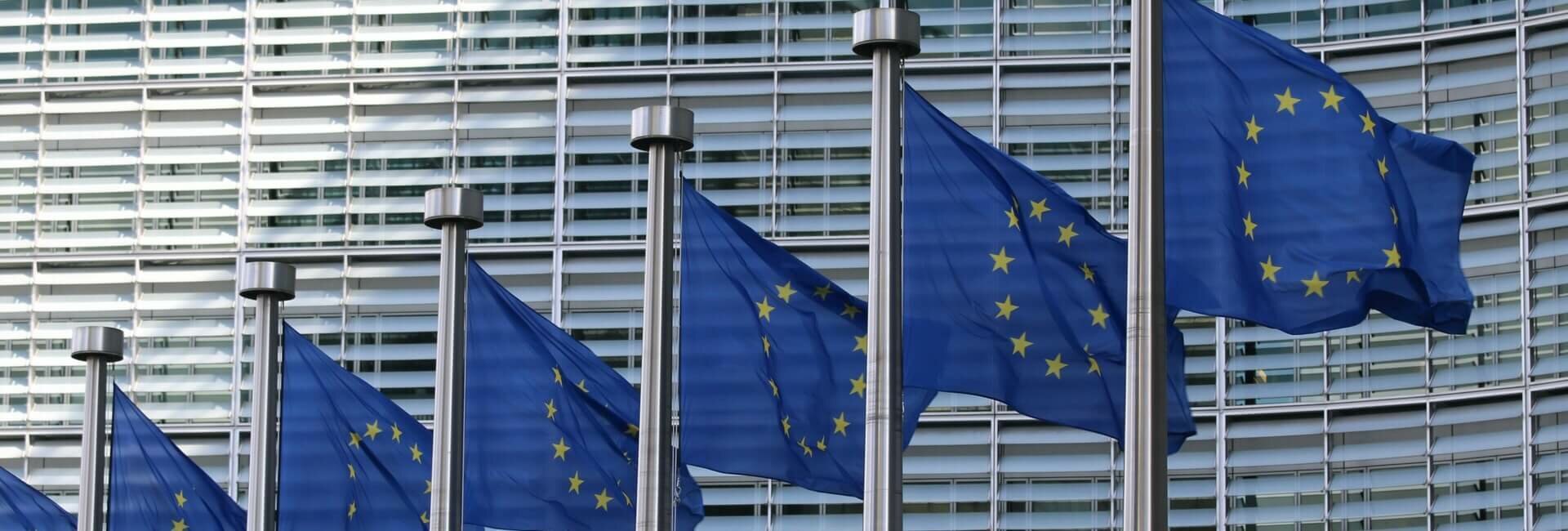
Latest News.
EU Commissions call for evidence – A new framework for standard-essential patents
The EU Commission has published a call for evidence for an impact assessment on 14 February 2022. With the public consultation, the Commission seeks views from stakeholders on various SEP-related issues.
The Commission had already announced in its 2020 “Intellectual Property Action Plan” that it would develop proposals to promote transparency and predictability in SEP licensing through a possible reform of the SEP licensing system. Accordingly, a corresponding reform was to be based in particular on the concept developed in the Commissions Communication on “Setting out the EU approach to Standard Essential Patents“ from 2017.
The Commission is now seeking the views of the public and stakeholders. This, together with the case law of the European Court of Justice on the handling of standard-essential patents and various studies, will feed into an impact assessment. On this basis, the Commission intends to prepare a legislative initiative, possibly in combination with non-legislative measures. This is because the Commission wants to work toward recalibrating the EU patent law to strengthen the patent system and promote the EU’s green and digital transformation. In doing so, the Commission is also looking ahead to the upcoming launch of the unitary patent system. According to Art. 20 UPCA, the Unified Patent Court will apply Union law in its entirety and respect its primacy. Accordingly, it will apply any European legislation, whereas efforts at national level will not have any direct effect on unitary patents.
Against this backdrop, the Commission seeks to address a key problem it has identified: inefficient licensing of SEPs, including “hold-up,” “hold-out,” and “forum shopping.” As the Commission puts it, it sees these problems stem from insufficient transparency and predictability, the uncertainty about FRAND terms and conditions, and the high enforcement costs and inefficient enforcement.
The Commission does not formulate any concrete measures. However, from the call for evidence and the corresponding questionnaire for consultation, one can conclude that there are certain focal points. In any case, the Commission seems to want to initiate a regulation. It also sees a clear need for action at EU level. This is especially with regard to licensing and enforcement since measures at the member state level could lead to different interpretations. It therefore wants to achieve the best possible balance of interests at EU level, especially with regard to the unitary patent.
The Commission identifies three main points as concrete policy options:
1. Improvement of transparency
In this regard, it sees the possibility of creating an obligation to disclose and update certain information. Already in 2017, the Commission had called on standardization organizations to ensure that databases provide detailed, up-to-date information on SEPs that is easily accessible to the public. The Action Plan also takes up this point and considers the use of new technology, such as blockchain technology, for this purpose.
In addition, the Commission would like to have the standard essentiality assessed by independent third parties in the future.
2. Initial clarification on various aspects of FRAND
Furthermore, the Commission is considering the development of “guiding principles and/or processes for clarifying the concept of FRAND”, “negotiating FRAND terms and conditions” and “determining appropriate level(s) of licensing in a value chain”. Here, a corresponding reform proposal should be of particular interest. The European Court of Justice was unable to comment on the question submitted by the Dusseldorf Regional Court as to whether a company can raise the abuse objection against SEP holders because they do not license companies in the supply chain. This question of the licensing level is therefore still open today.
3. Improving the effectiveness and efficiency of enforcement.
Finally, the Commission plans to create further incentives for mediation, conciliation, and arbitration. In its 2017 communication, the Commission refers to the planned arbitration and mediation center of the Unified Patent Court. However, the Commission does not indicate what such incentives should look like. Likewise, it is not immediately apparent how this aspect is consistent with the goal of improved transparency.
In any case, things remain exciting around the subject of SEP. According to the EU Commission’s timetable, we can expect the next step as early as the fourth quarter of this year. Based on the impact assessment, the Commission will develop an initiative. It will probably (also) propose new EU law.
Accordingly, all stakeholders should participate in the consultation. Only in this way can the Commission recognize and take into account all points of view. The Commission will thus seek a way to ensure that patent holders are adequately remunerated while at the same time allowing the economy and society to benefit from the technical achievements of our time.
Feedback and consultation period end on 9 May 2022.
Dr Katharina Brandt
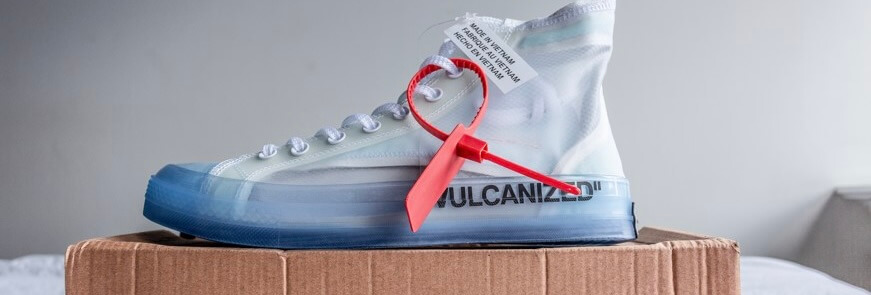
Latest News.
Wired situation: How a trademark litigation affects the fashion world
After long back and forth, the luxury label Off-White wins the rights to a – now famous – cable tie label. How did it come about and what arguments made the difference? A summary of the case:
A luxury fashion label has been fighting for three years to get the trademark registration of a label that is actually – according to this same label – supposed to be removed before the garments are worn. Specifically, it is about a red cable tie that is attached to the popular sneakers. Off-White designs these in collaboration with Nike. But: “Sneakerheads” did not think much of the recommendation to remove the cable tie before wearing them; they continued to wear the shoes including the cable tie.
Normal label or unmistakable brand representation?
Against this background, Off-White wanted to register the accessory as a trademark. After all, it was an unmistakable brand feature that had to be protected against counterfeiting. For years, however, the U.S. Patent and Trademark Office (USPTO) did not agree with this assessment: The cable ties were a decorative product component that had the functionality of a label, but not a distinctive design element that served to identify the brand.
Off-White disagreed: the cable tie is no different from normal logos that identify the manufacturer of a fashion item. It creates a clear link with the trade mark and thus fulfils the requirements for the distinctiveness of a product. According to Off-White, only with a registration is it possible to effectively protect oneself against plagiarism, which often exists in the luxury fashion sector.
“Brand” as a purchasing argument in the luxury sector
According to Off-White, it must also be kept in mind that a clear brand presentation can and is a weighty purchasing argument, especially in the luxury segment. As is well known, the concept of a brand product as a status symbol does not only apply in the fashion world. The fact that the sneakers, including cable ties, are also frequently worn by celebrities and fashion influencers should also contribute to the fact that the path from red cable ties to Off-White is short. These arguments are said to have finally led Off-White to success and thus to trademark registration.
We continue to watch the trademark situation in the luxury fashion world with interest; Off-White alone is involved in a few more matters with the USPTO and not alone in this. The attempt to register the slogan “For Walking” (including inverted commas) initially failed. It remains to be seen whether Off-White will make further attempts to obtain a trademark registration.
One thing is certain, however: it is a major legal effort for an accessory that should actually be removed before it is worn.
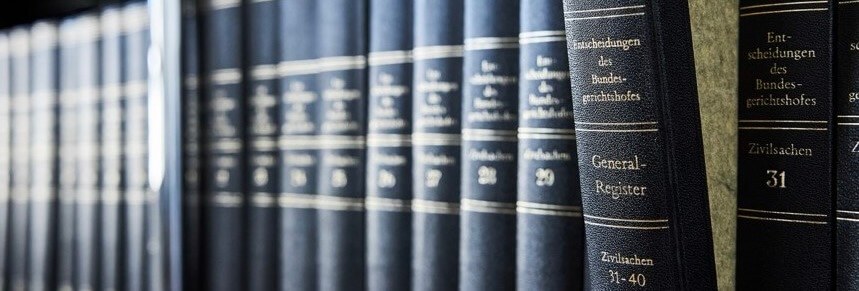
Latest News.
CQI report (FCJ) – Informal discussions between ETSI members
The Federal Court of Justice (judgement of 18 January 2022 – Ref. X ZR 14/20 – CQI Report) had to decide the question whether proposed solutions discussed in informal discussions between ETSI members have been made available to the public and are thus prior art according to Art. 54 (2) EPC.
1. FACTS
One day before the priority date of the patent in suit, a meeting of a ETSI working group was held in Kansas City. After the meeting was over, four participants from different companies still had substantive discussions. In the process, the participants discussed an approach to a solution. One of the participants of the meeting developed this solution as a standardization proposal (NK33 in the invalidity proceedings) the following night and sent it to the standardization committee the next day (priority date of the patent in suit).
2. JUDGEMENT
The Federal Court of Justice has ruled that proposals exchanged merely in informal discussions between ETSI members are not prior art under Art. 54 (2) EPC.
In accordance with the previous case law of the Senate, a written document is public if it is intended for processing in public and has become accessible to a circle of persons which is not limited per se and not only to individual persons (FCJ, decision of 9 February 1993 – X ZB 7/92, GRUR 1993, 466 – Fotovoltaisches Halbleiterbauelement). For this to be the case, a non-specified group of persons must have been able to take cognizance of the content of the document prior to the priority date. Accordingly, these principles also apply to oral statements.
In the case of statements made in the context of a meeting of an ETSI working group, a distinction must therefore be made between formal meetings and informal discussions outside these. In contrast to informal discussions between individual participants, the course of the meetings is regulated by an ETSI guideline. According to this guideline, a meeting chair leads the meeting and points out the competition rules to the members. In accordance with the decision of the Federal Court of Justice, documents introduced by a participant in a formal meeting are not to be regarded as confidential on the basis of the ETSI guidelines. Something else only applies if the documents are marked as confidential.
In contrast, according to the decision of the Federal Court of Justice, statements made to a limited number of participants outside of formal meetings are generally not available to the public. Accordingly, a participant in the meeting is likely to assume that statements made outside formal meetings will be treated as confidential by the other participants in the discussion. This also applies if the statements are made to employees of competitors. It is to be assumed that the other participants in the discussion will at most discuss the proposed solution with colleagues in the company.
3. PRACTICAL ADVICE
As a rule, plaintiffs in invalidity proceedings already have the problem of proving the content of conversations. According to this decision, the content of informal discussions, with exceptions, is not likely to be public and thus not prior art according to Art. 54(2) EPC, so that questions of proof will not even be relevant.
This decision is in line with previous Federal Court of Justice case law (GRUR 2013, 367 – Messelektronik für Coriolisdurchflussmesser; GRUR 1993, 466 – Fotovoltaisches Halbleiterbauelement). In the present case, however, one may question whether approaches to a solution, which are discussed in informal discussions but without a corresponding confidentiality agreement between different members of ETSI, are treated as confidential by all participants in the discussion. The decision reflects the rather generous attitude of the Federal Patent Court that conversations or documents were often to be considered confidential.
However, the European Patent Office follows a different standard in this question. The Boards of Appeal regularly assume the confidentiality of a conversation only if there is a confidentiality agreement or special circumstances (T 1085/92; T 1081/01).
Whether discussions between representatives of ETSI members are considered confidential by the participants leaves room for discussion. In any case, informal discussions are likely to promote technical progress, because it is precisely in these discussions that entirely new approaches can be discussed without directly discussing elaborated proposals in a large group. Apparently, the Federal Court of Justice does not want to take away the ground from these informal discussions. Participants in such discussions should nevertheless be careful about what ideas they disclose outside of public meetings if they have not already filed a patent application for the idea.
Carsten Plaga

Latest News.
ECJ referral question of the Munich District Court I on preliminary injunction proceedings – Will the standard for preliminary injunctions in patent law now change?
In a reference for a preliminary ruling pursuant to Art. 267 TFEU, the Regional Court of Munich I (Landgericht München I), in a decision of 19 January 2021, had referred the question to the ECJ as to whether preliminary injunctions in patent law may always require that proceedings on the validity of the patent have been concluded. The ECJ has now ruled that this is incompatible with EU law. As a result, the validity of the patent in suit will probably also have to be discussed more intensively in injunction proceedings. It could also now become questionable whether a decision in validity proceedings would create new urgency. In detail:
1. BACKGROUND
The Regional Court of Munich I had referred the following question to the ECJ: “Is it compatible with Union law for higher regional courts to generally refuse to issue interim measures for the infringement of patents if the patent in dispute has not yet gone through opposition or nullity proceedings in the first instance and has been confirmed therein?”. The background to this question for reference was the reaction to the changed case law of the Munich Higher Regional Court on the requirement of a secured validity of patents in preliminary injunction proceedings. When issuing a preliminary injunction in a patent infringement case, it is generally necessary that, in addition to the actual injunction claim (injunction patent infringement), there is also a reason for the injunction, which then includes not only urgency, but also the substantiation of a sufficiently secured validity of the injunction patent. According to the previous decision practice of the Higher Regional Courts, it is not sufficient for the issuance of a preliminary injunction in patent infringement proceedings that the asserted patent was granted by the granting authority after detailed examination. Beyond this circumstance, the Higher Regional Courts, particularly in Düsseldorf and Munich, generally additionally require that the patent granted has been examined for patentability a second time in opposition or nullity proceedings in the first instance before issuing a preliminary injunction due to its infringement. However, there are numerous exceptions to this principle. For example, according to case law, it may be sufficient in individual cases if a patent is recognized by well-known competitors (e.g. by taking licenses), or if the defendant only submits unsuitable prior art. However, neither the referring chamber of the Regional Court dealt with these and other exceptions, nor did the ECJ address them. The decision is therefore solely focused on the case where none of the numerous groups of exceptions are present and no other arguments are available.
2. GROUNDS OF DECISION
Specifically, the ECJ deals with the question whether Art. 9 (1) of Directive 2004 / 48 (“Enforcement Directive”) is to be interpreted as precluding a national case law according to which the grant of provisional measures for the infringement of patents is in principle refused if the patent in suit has not survived at least first instance opposition or nullity proceedings. The ECJ first states that according to Art. 9(1)(a) of Directive 2004 / 48, Member States should ensure that the competent courts have the possibility to order a provisional measure against the alleged infringer at the request of the applicant in order to prevent an imminent infringement of an intellectual property right. (1) a) of Directive 2004 / 48, Member States should ensure that the competent courts have the possibility to order a provisional measure against the alleged infringer at the request of the applicant in order to prevent an imminent infringement of an intellectual property right. According to Art. 9 (1) a) in conjunction with recitals 17 and 22 of the Directive, the Member States would have to provide in their national law the possibility for the competent national courts to order a provisional measure after an examination of the particular circumstances of the individual case and in compliance with the conditions provided for in Art. 9. Furthermore, according to Art. 9 (1) a) of the Directive in question in conjunction with Recital 22, the provisional measures provided for in national law should enable the immediate cessation of the infringement of an intellectual property right without having to wait for a decision on the merits. Those measures are justified in particular where any delay would demonstrably cause irreparable harm to the holder of such a right. Thus, the time factor is of particular importance for the effective enforcement of intellectual property rights.
The above case-law and decision-making practice would, however, establish a requirement that would deprive Article 9 (1) a) of Directive 2004/48 of any practical effectiveness, since national law would be precluded from ordering, in accordance with that provision, an interim measure to put an immediate end to the infringement of the patent in suit, which it considers to be valid and infringed. Such a requirement could also result in potentially infringing competitors of the proprietor of the patent at issue deliberately refraining from attacking its validity in order to prevent the patent from benefiting from effective judicial protection, with the result that the mechanism of interim relief provided for in Article 9 (1) of Directive 2004 / 48 was deprived of its substance. Furthermore, the objectives pursued by Directive 2004 / 48 would confirm that a national jurisdiction of this kind would not be in conformity with it. This is also argumentatively supported by the tenth recital of the Directive, which would indicate that it is intended to approximate the laws of the Member States in order to ensure a high, equivalent and homogeneous level of protection of intellectual property in the internal market. A domestic procedure designed to bring to an immediate end any infringement of an existing intellectual property right would be ineffective and thus fail to achieve the objective of a high level of protection of intellectual property if its application were subject to a requirement such as that described in the question referred for a preliminary ruling.
Furthermore, the ECJ states that patents carry a presumption of validity from the time of publication. Thus, they would also enjoy protection fully encompassing Directive 2004 / 48 as of that date. With regard to the risk that the defendant would suffer damage in the proceedings for interim relief by the granting of provisional measures, it must be noted that according to Art. 3 (2) of Directive 2004 / 48, the measures, procedures and remedies necessary for the enforcement of intellectual property rights must be applied in such a way as to avoid the creation of barriers to legitimate trade and thus provide a guarantee against their abuse. Consequently, the Union legislature has already provided legal instruments which make it possible to reduce dangers of this kind altogether and to protect the defendant accordingly. It is further argued that the principle of interpreting national law in conformity with the Union would be subject to certain limits. Thus, there would be an obligation on the national judge to refer to Union law when interpreting and applying the relevant provisions of domestic law. In the present case, the German legislation at issue would not contain any provisions according to which the issuance of an interim measure to prohibit a patent infringement would require a court decision in a state of the law proceeding, so that these provisions would be entirely in line with the directive in question.
3. CONCLUSION
The ECJ has ruled on the isolated question of referral: Successfully surviving validity proceeding is thus no longer required as a rule. What are the implications for practice? It can be assumed that the burden of proof regarding the validity of patents will shift back to Defendant, the actual or alleged infringer. Defendant would therefore be advised to prepare himself even more than before with appropriate prior art searches in order to be able to present a strong legal attack at the latest in the case of an application for a preliminary injunction.
According to previous case law, a decision on the validity of a patent has often opened a new urgency, since without this decision a request for a preliminary injunction usually did not have a high chance of success. Whether this possibility of a new urgency still exists is likely to depend on the individual case on the possible attacks against the patent. Particularly in the case of an already ongoing legal action, there may still be a lot to be said for waiting for its outcome.
It is regrettable, however, that the very extensive and balanced case law of the German courts, which precisely allows a deviation from the principle of the necessity of a decision on the validity of a patent, was not considered and not included in the decision.
Christopher Weber
Hüveyda Asenger
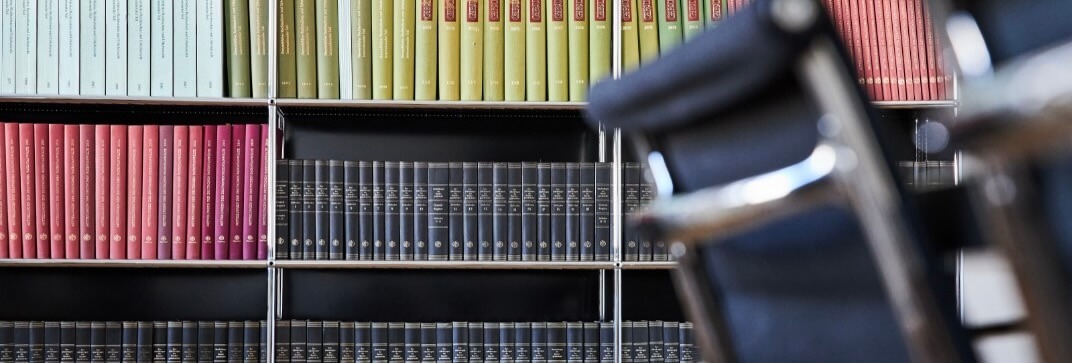
Latest News.
Protection of trade secrets in patent litigation (Sec. 145a Patent Act) – practice in Dusseldorf
With the introduction of Section 145a Patent Act (August 18, 2021), the legislator has created a possibility to protect trade secrets in patent litigation by applying the Trade Secrets Protection Act accordingly.
In the meantime, first decisions have been issued on the basis of Section 145a Patent Act. However, numerous substantive and procedural questions are still open. For example, the 4b. Chamber of the Regional Court Dusseldorf, for example, has issued general instructions in one case on how to proceed in practice, at least at the Düsseldorf patent litigation chambers.
1. MOTION
These general instructions leave it to the applicant to decide whether the request for protection of trade secrets is made with the relevant pleading or in advance. However, if the motion for protection of trade secrets is filed with the pleading, the motion should be specially marked so that the court does not inadvertently serve it on the opposing party. In addition, a redacted and a marked version of the pleading should be filed.
What is interesting about the general references is that the specific information to be covered by the order have to be included in the motion. Accordingly, a reference to passages in the pleading or exhibits would not be sufficient. This would have the advantage that the order would thus also apply to future pleadings without having to file a new motion. This point should make the procedure much more practicable, partly if the motion for protection is filed at the beginning of the patent litigation. However, this also entails that both parties have to discipline themselves in subsequent pleadings to identify the information covered by the order and additionally file a redacted version.
2. REASONABLE STEPS TO KEEP THE TRADE SECRET
In most cases, the main focus in justifying the motion is likely to substantiate the reasonable steps to keep the trade secret under Sec. 2 of the Trade Secrets Act secret. This applies to the information for which the applicant seeks protection. How high the requirements for the reasonable steps are, depends on the individual case. It has already been shown that courts pay particular attention to this point.
In advance, the question naturally arises as to whether the information is secret according to Sec. 2 no. 1 a) Trade Secret Act. On the applicant’s side, it has therefore also be ensured that the information is not disclosed with the motion for protection of trade secrets, i.e. that the motion or the pleading is only sent to the court and not to the opposing party in an unredacted form. If the opposing party receives the information before the court has decided on the order, the requirements under Sec. 2 no. 1 a) Trade Secret Act may no longer be met.
3. PROCEDURE
In accordance with the reference in Sec. 145a Patent Act, the course of proceedings is governed by Sec. 20 Trade Secret Act. This is reflected in the general instructions of the 4b. Chamber of the Regional Court Dusseldorf. As a result, this means that irrespective of the success of the motion, the opposing party will receive the information which, from the applicant’s point of view, needs to be kept secret. The applicant can only counter this by filing the application for protection of secrets in advance. However, the applicant is then faced with the dilemma that, according to the general instructions, on the one hand he should name the information specifically in the motion, but on the other hand he does not want to disclose the information through the motion. In such cases, it will then depend on how concretely the information has to be included in the motion. The Practice will show this. First of all, however, this leads to an undesirable uncertainty for the applicant.
4. OPEN QUESTIONS
The general information provided by the 4b. Chamber still leave unanswered the question of whether an order for the protection of trade secrets is also conceivable, for example, in execution proceedings. This is disputed in the literature. Financial information and rendering of accounts regularly contain sensitive information that constitutes a trade secret. The question therefore has a high practical relevance. The Regional Court Mannheim recently affirmed the applicability of Sec. 145a Patent Act to execution proceedings. At least some of the literature takes the opposite view, so the question remains exciting.
Carsten Plaga
